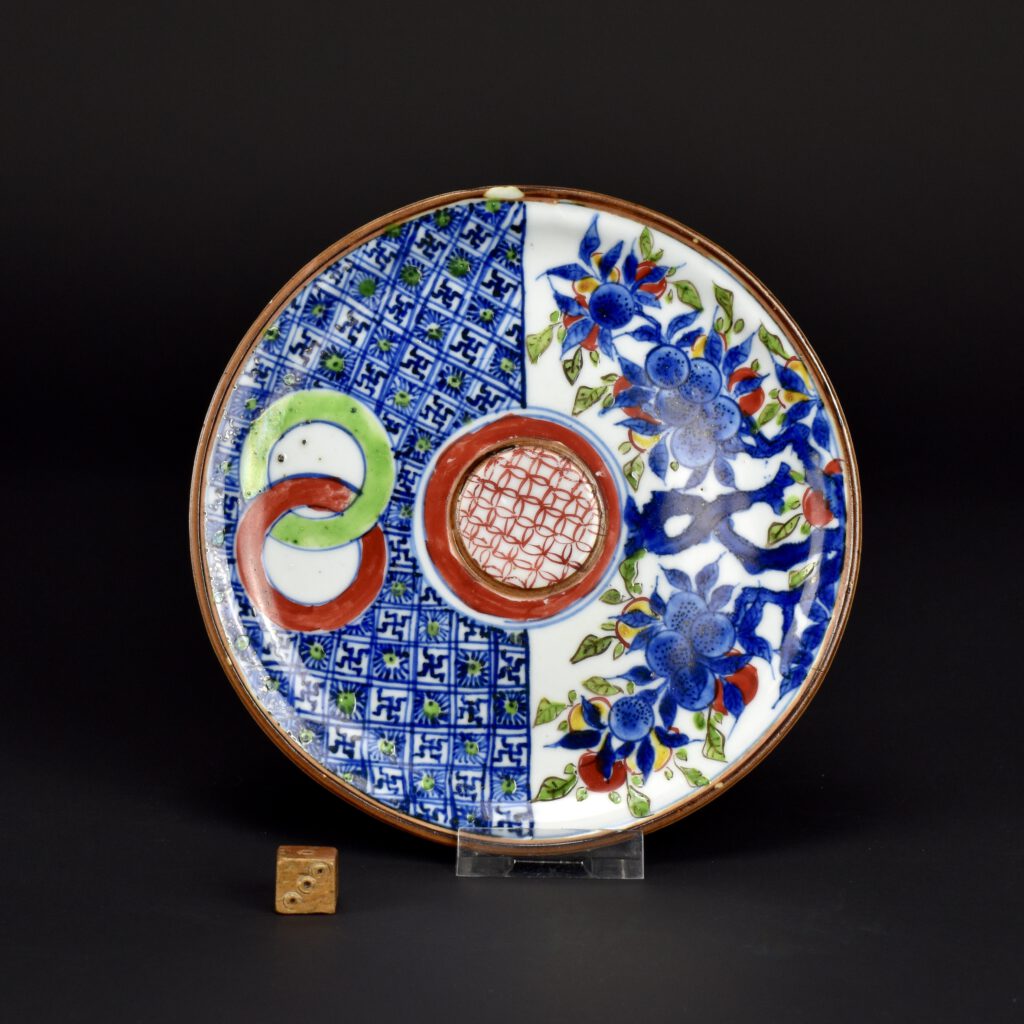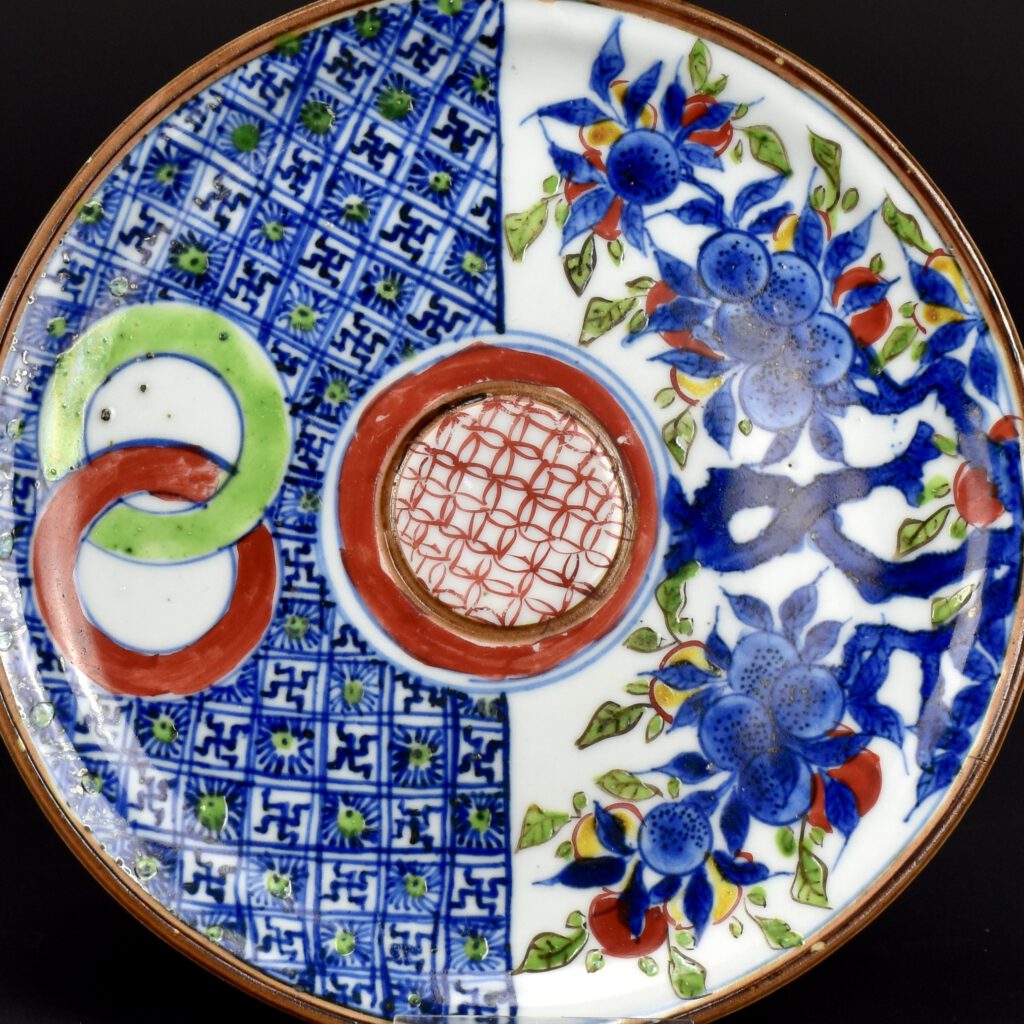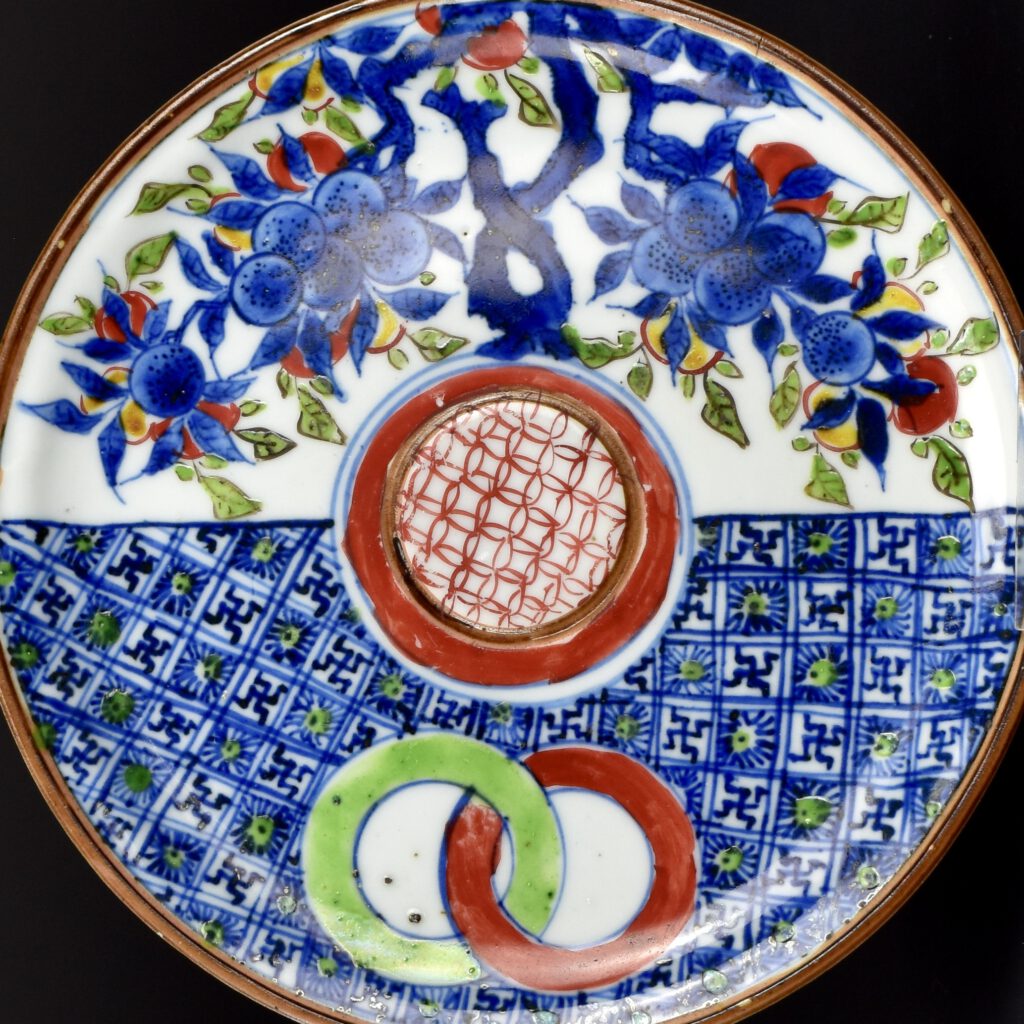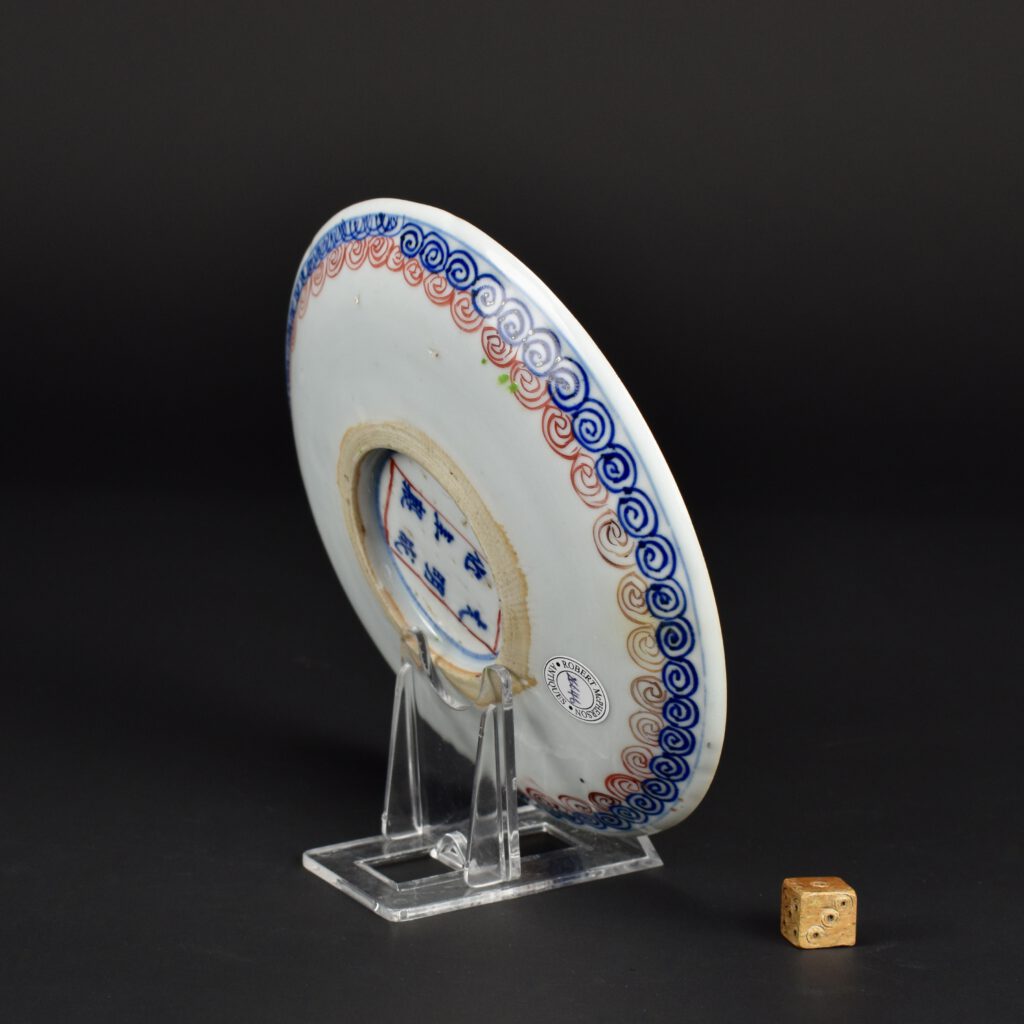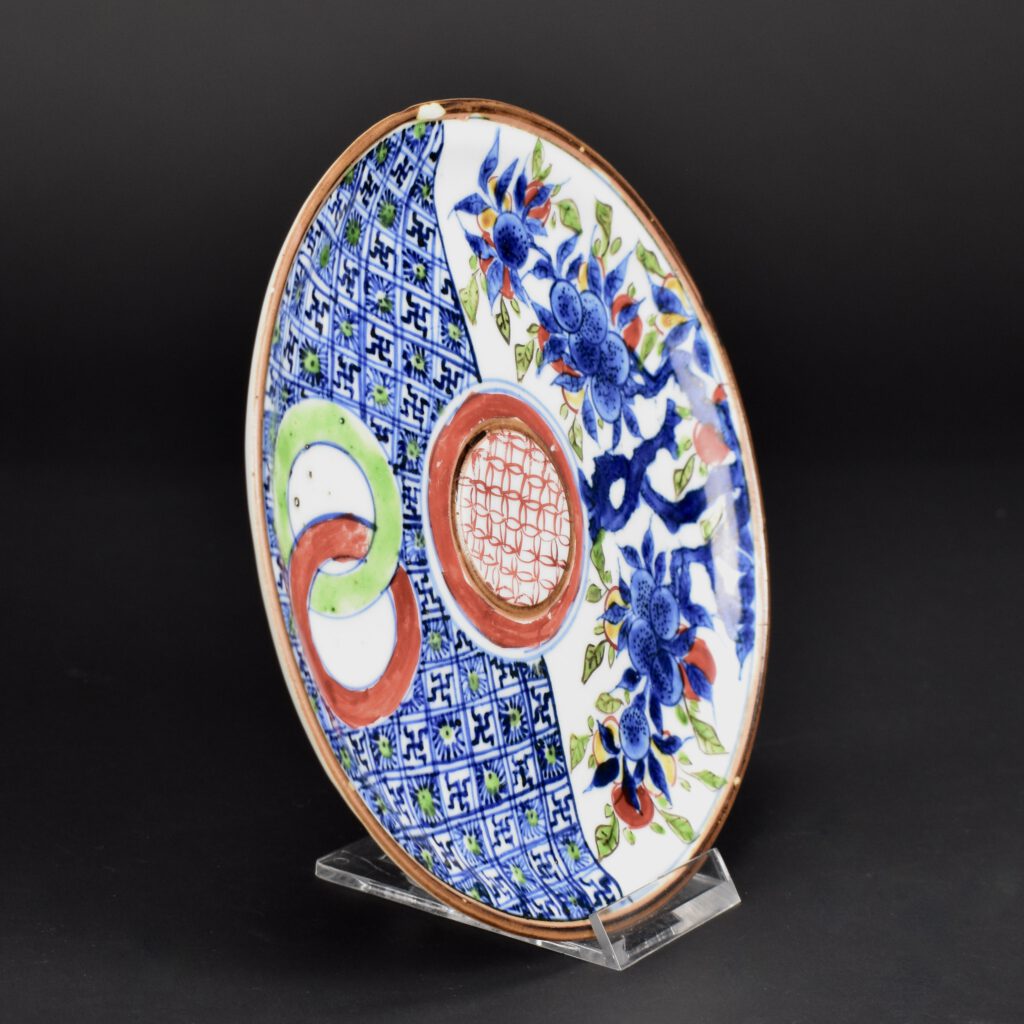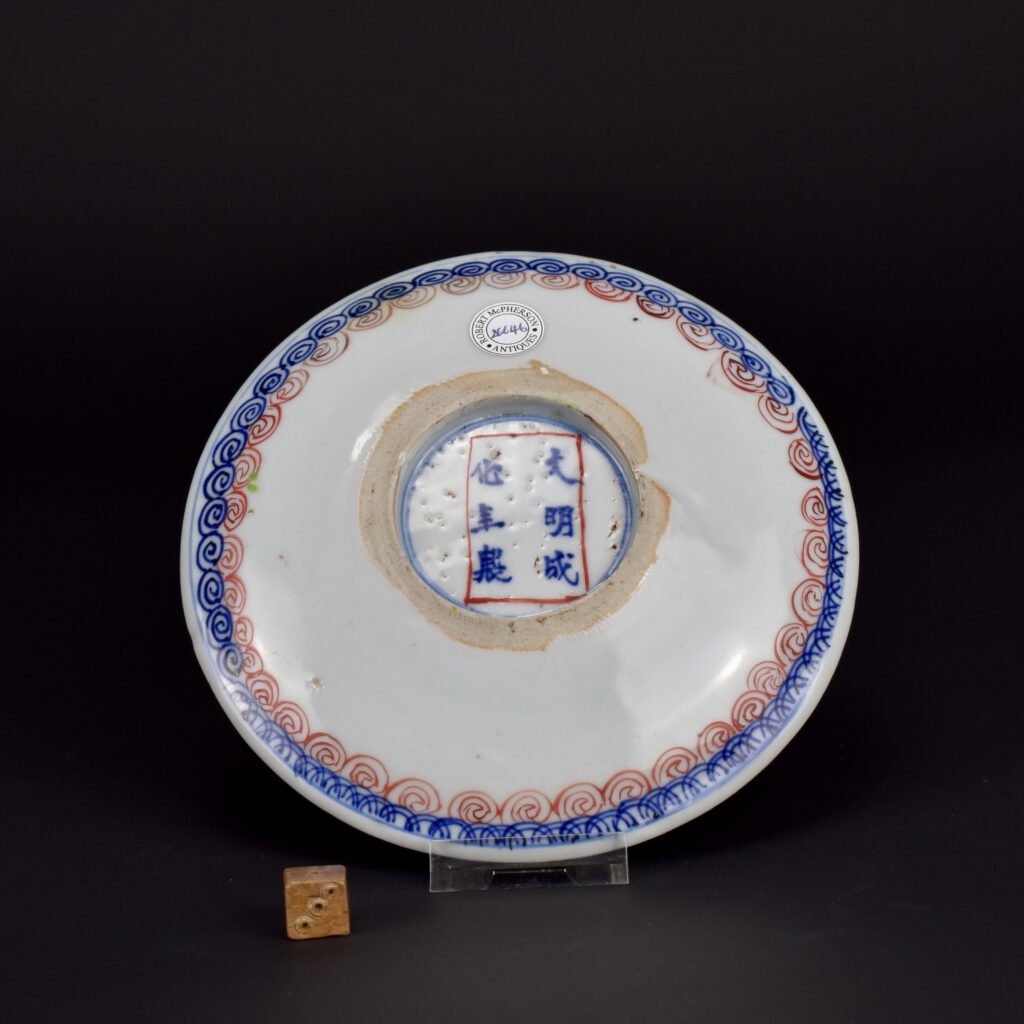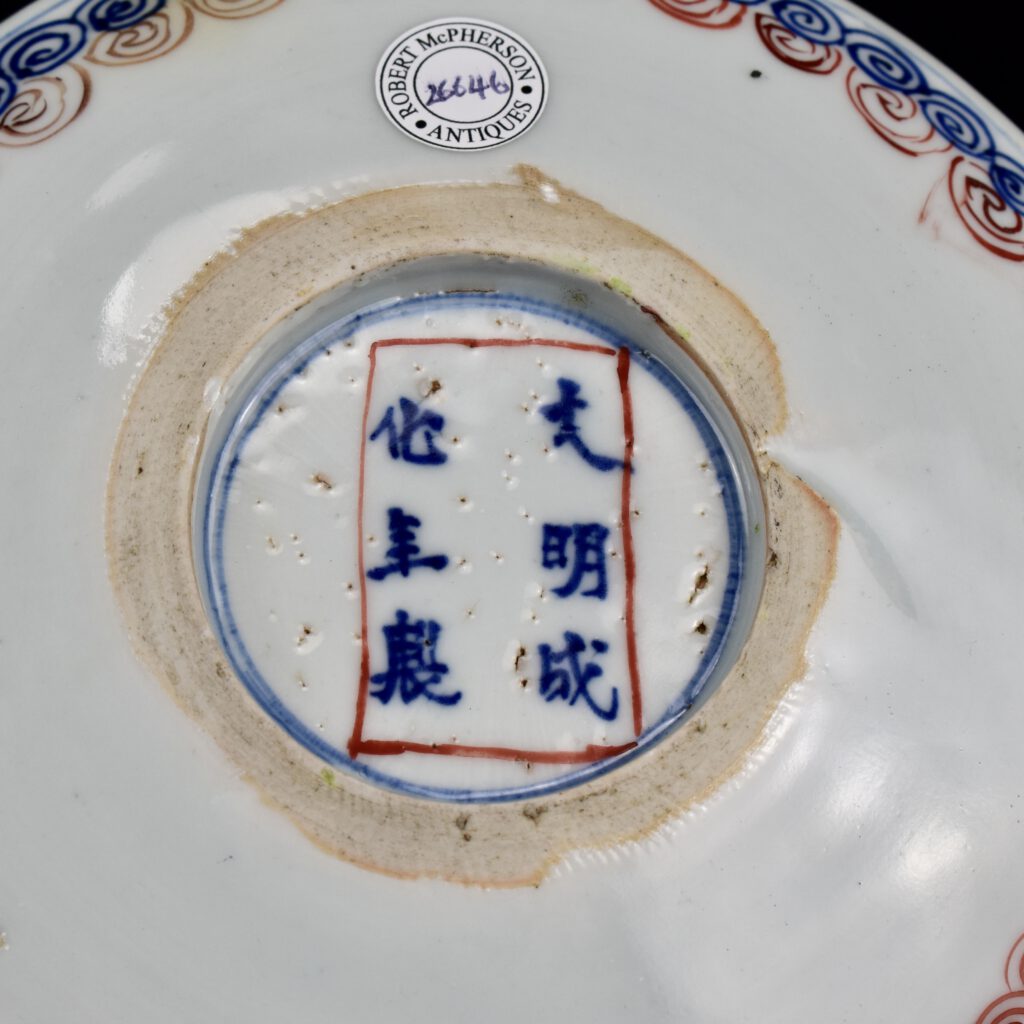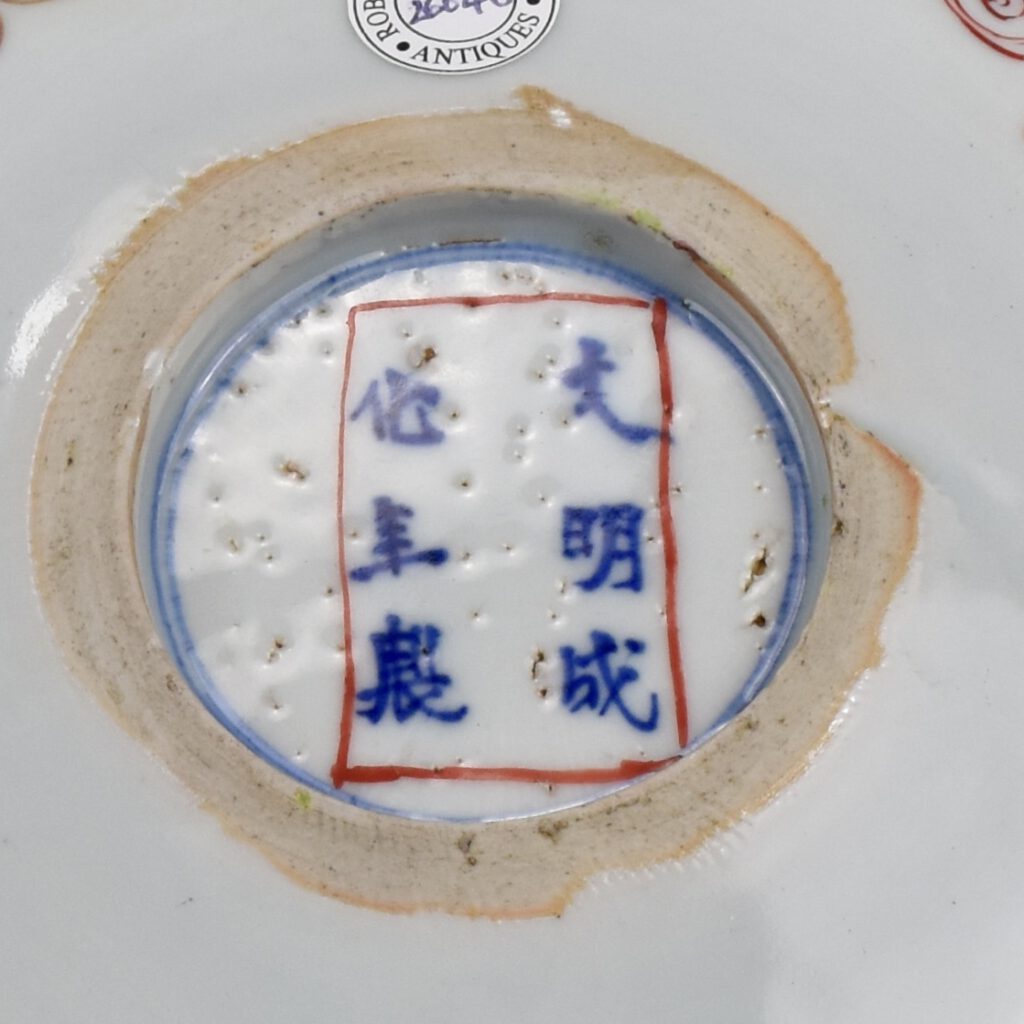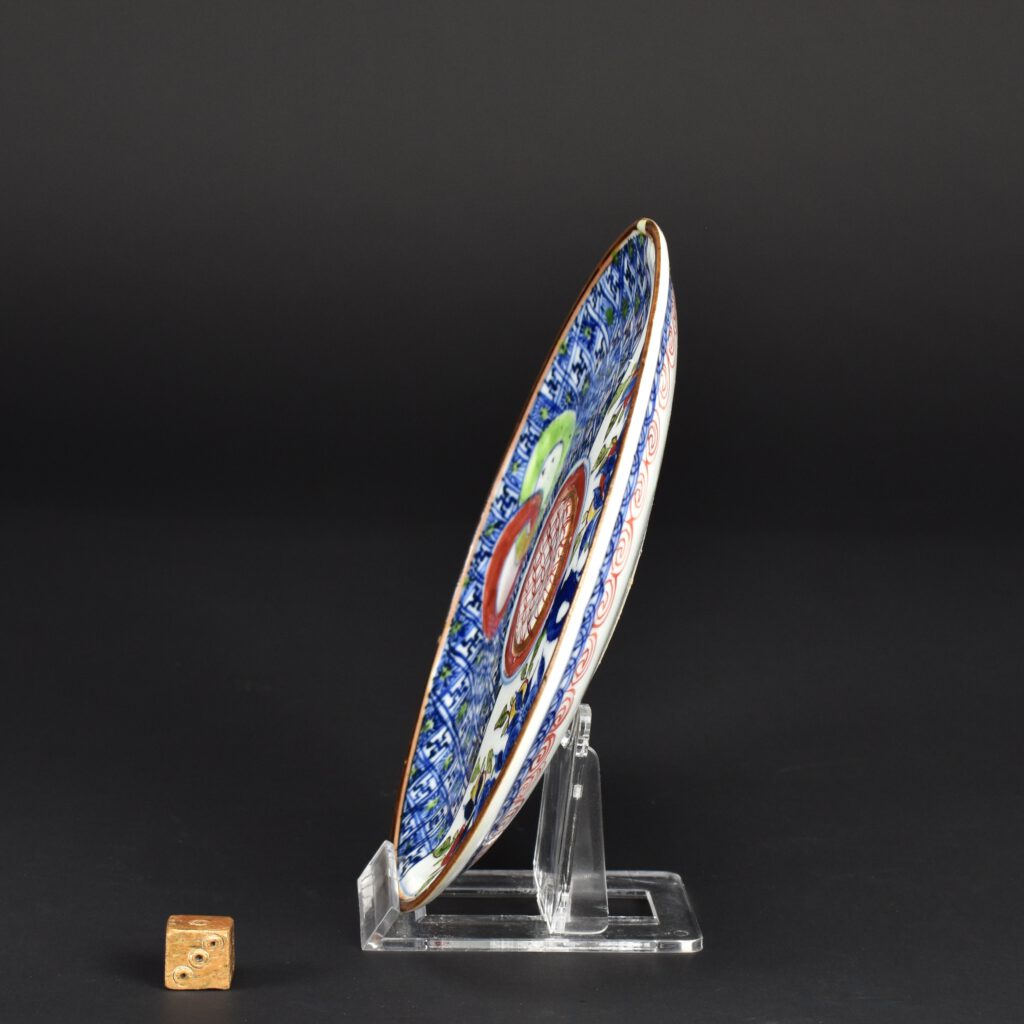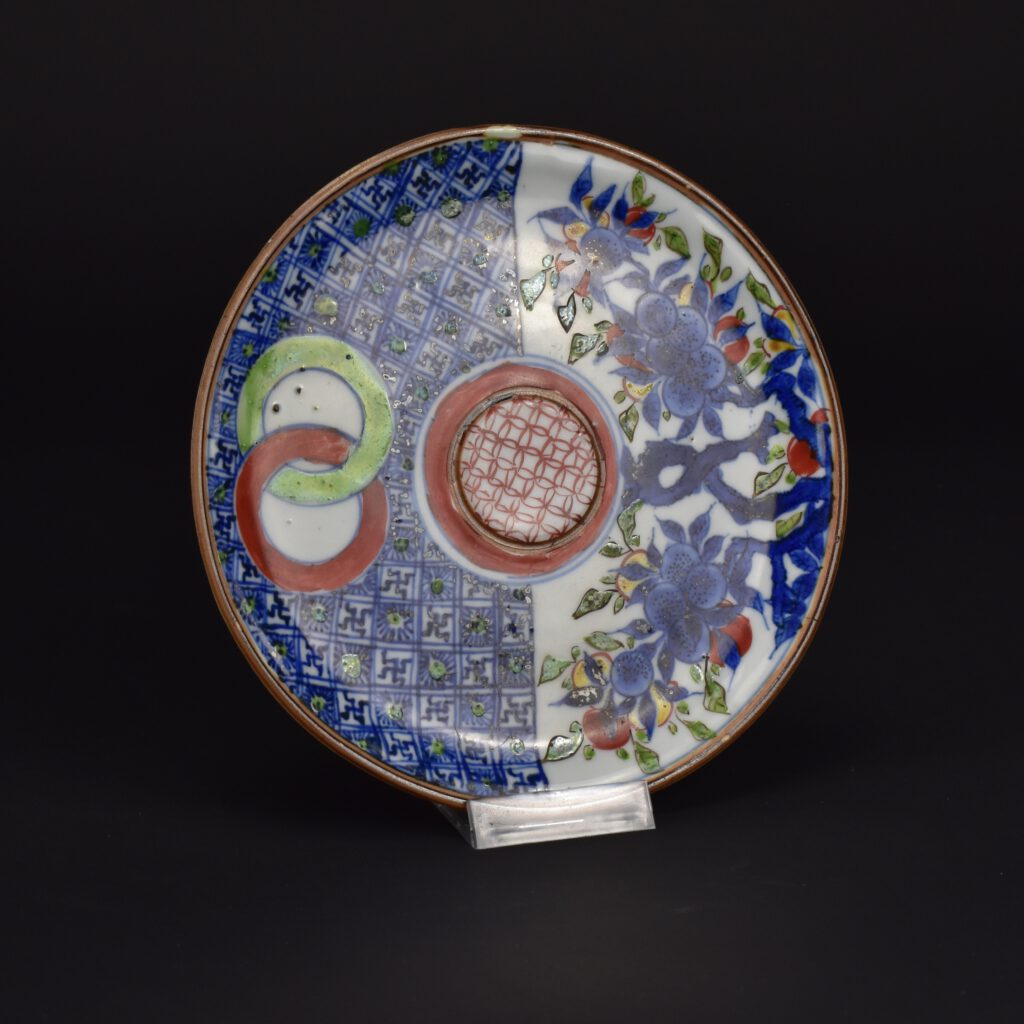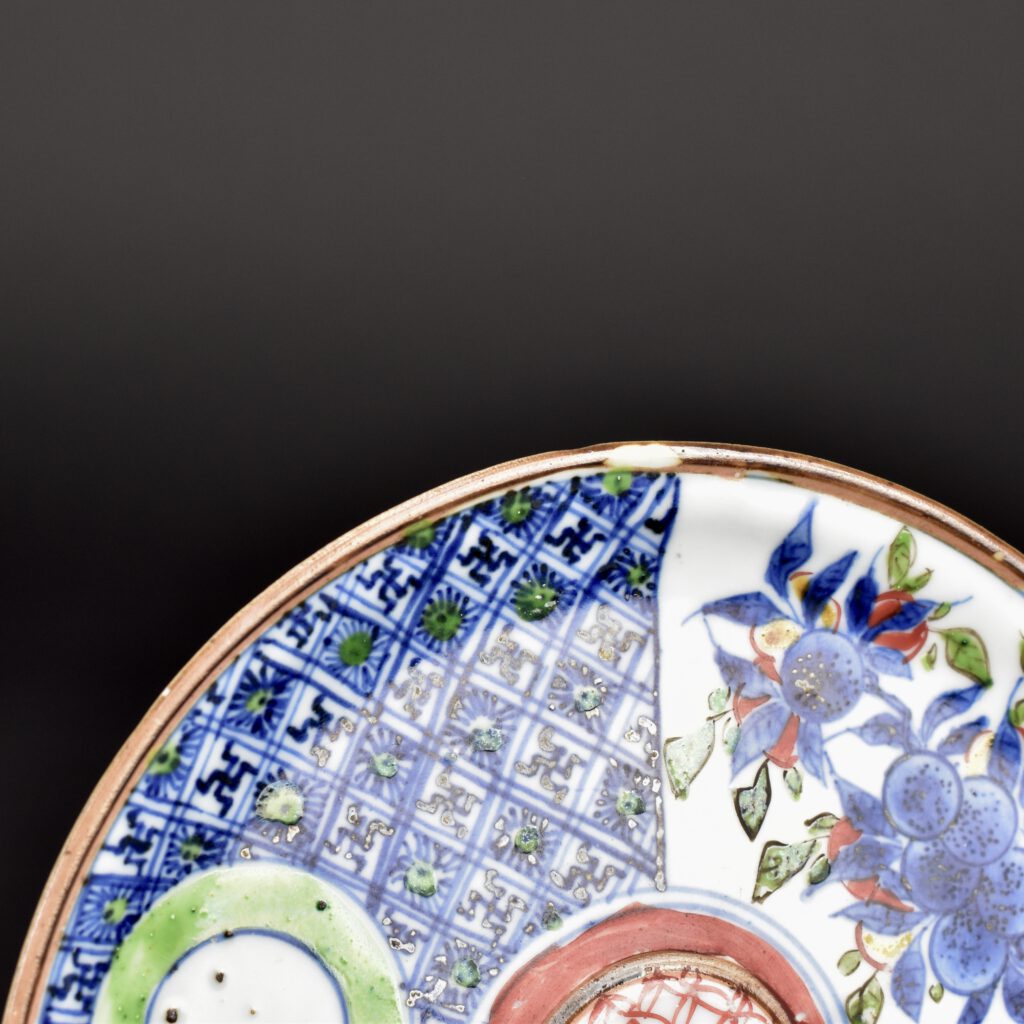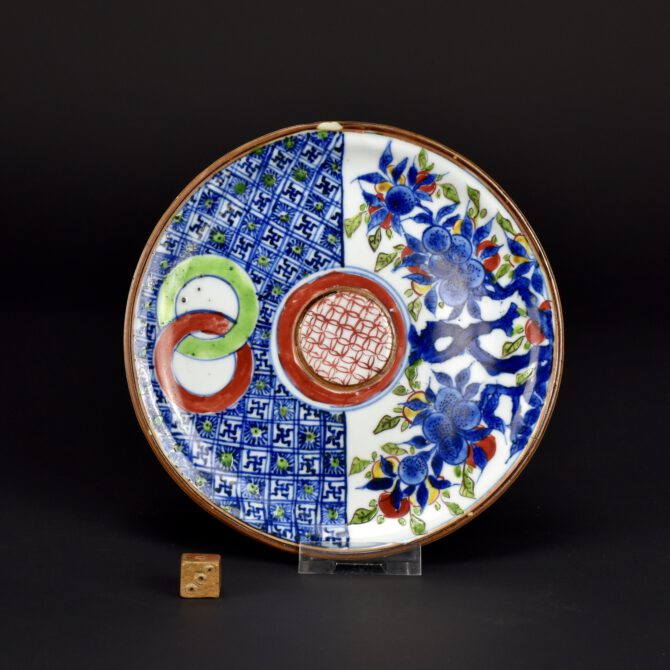
A Rare Transitional Porcelain Stand Made for the Japanese Market
A Rare Transitional Porcelain Stand Made for the Japanese Market, Jingdezhen Kilns, Ming Dynasty, Tianqi 1621 – 1628 or Chongzhen Period 1628 – 1644. This stand was probably used for a cup or bowl. This Ming porcelain stand is thickly potted to the center, thinning to the outer edge, which is slightly thick and has an iron oxide dressed rim. Just in between the iron brown rim and the painted decoration is a very thin unglazed line. This must have been difficult to achieve as it is only one or two millimetres wide. This seems to mimic the metal bands that are sometimes added to the unglazed rims of porcelain. The center of this stand is raised and decorated in iron red with a cash diaper, a shallow furrow has been cut into the porcelain and decorated with iron oxide brown, an asymmetrical iron red band, thicker on one side surrounds the central boss. In the blue diaper ground are two intersecting circles, Wachigai Mon (輪違い文). Wa (輪) means a ring in Japanese. Wachigai shows the way the rings intersect. Since a ring spreads in all four directions, its name changed to the Shihou (四方, four directions) and switched to the Shippou (七宝, the literal meaning of the characters means seven treasures). It is an auspicious symbol. The other half of this stand depicts a tree full of fruit in different stages of ripeness, perhaps it is a peach tree. The sunken base of this Ming dish has an apocryphal six character Chenghua mark (Ming dynasty 1465-1487).
SOLD
- Condition
- In excellent condition, minor firing faults. There is a drop of glaze on the iron oxide rim, see the last image in the Photograph Gallery below.
- Size
- Diameter 14.9cm (5 3/4 inches). Depth 1.5 cm.
- Provenance
- N/A
- Stock number
- 26646
